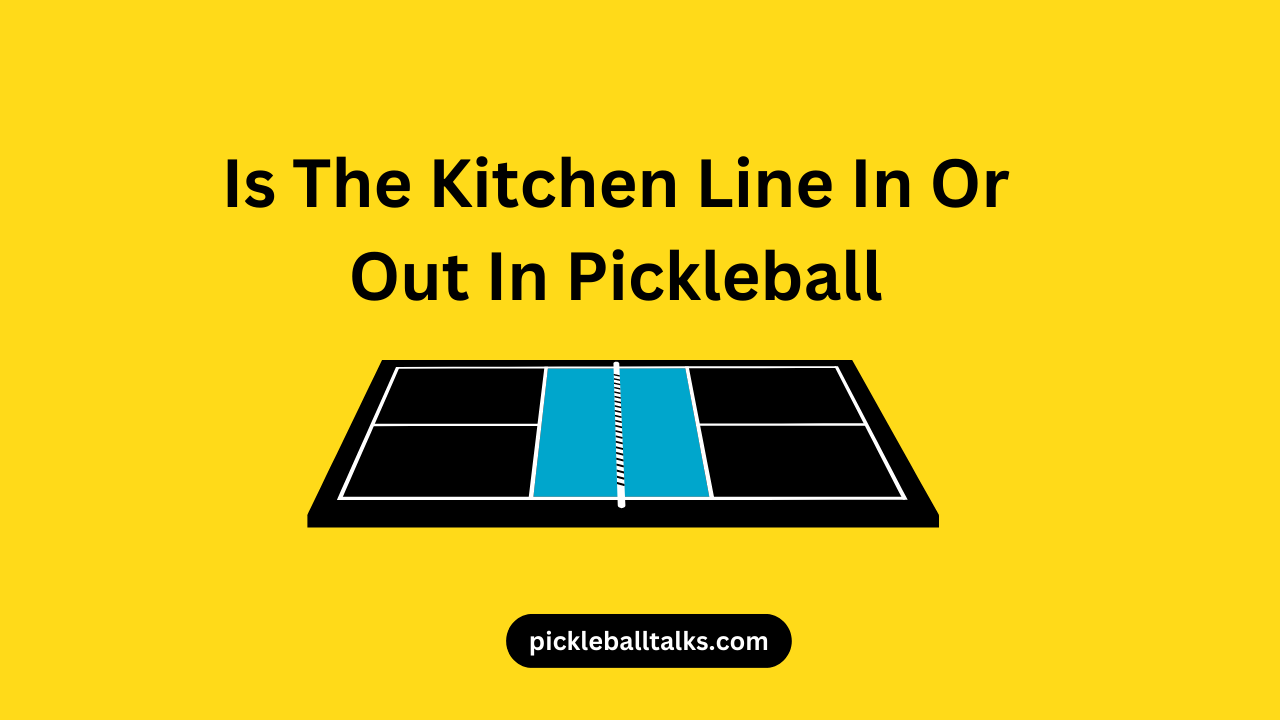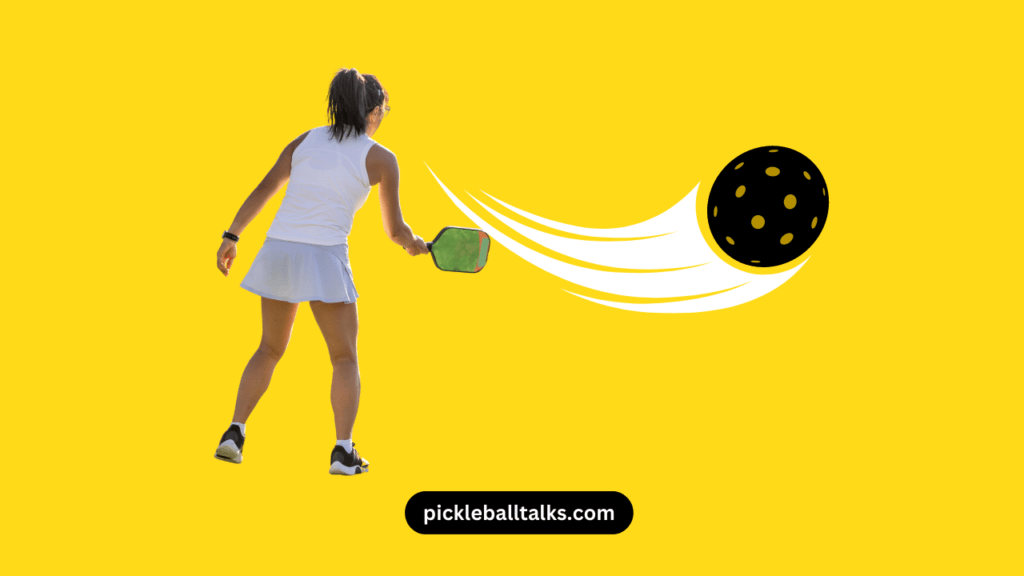Is The Kitchen Line In Or Out In Pickleball

Today we simmer in the heat of a much-debated topic – “Is the Kitchen Line in or Out in Pickleball?”
As fans and players, we keep coming back to this spicy pickle of a question, don’t we?
The Kitchen Line – the centerpiece of drama and excitement on the court.
Also Read – Best 10 Outdoor Pickleball Balls for 2023 [Reviewed]
But is a ball bounced here in the game or out? Well, let us put our brainstorming hats on and serve up some hearty discussion!
Settle in because it’s time to dig into this deliciously tricky aspect of the lively game of Pickleball.
Kitchen Line
The kitchen line, also known as the non-volley zone (NVZ), plays a significant role in pickleball.
It’s a seven-foot area located on both sides of the net, extending from the net to a parallel line marked on the court.
The kitchen line helps ensure fair play by limiting players’ movements and strategies near the net.
the Rule of Kitchen Line In Or Out
In pickleball, players are not allowed to hit the ball out of the air (volley) while standing inside the kitchen area.
This rule prevents players from taking an advantageous position close to the net and smashing winners without giving their opponents a fair chance to return the ball.
To execute a volley legally, players must ensure that both feet are positioned outside the kitchen line at the moment of contact with the ball.
Stepping on or over the kitchen line before the volley results in a fault, awarding the point to the opposing team.
Why the Kitchen Line Matters?

The kitchen line is crucial because it promotes strategic and skillful gameplay.
Limiting volleys near the net encourages players to focus on precise placement and well-timed shots rather than relying solely on brute force.
This aspect of the game adds nuance, requiring players to carefully consider shot selection and court positioning.
Importance of the Kitchen Line
Ensuring a level playing field by preventing dominance at the net
The Kitchen Line ensures fairness during gameplay. Without it, stronger and taller players could monopolize the net, making it hard for their opponents to score.
By imposing a rule that the non-volley zone or kitchen area is a no-fly zone for volleys, it levels the playing field.
It demands that each player, regardless of their physical stature and power, maintain a minimum distance from the net, reducing any potential dominant hold over the game.
Promoting safety by discouraging overly aggressive play
The second importance of the Kitchen Line is to promote safety in the sport.
Pickleball is a sport with an all-ages fandom. With people’s safety in mind, the kitchen line rule helps ensure that there isn’t too much overly aggressive play near the net, especially when the battle intensifies.
Players cannot make smash shots from near the net because they can’t volley in the kitchen area, reducing the risk of injuries from high-speed incoming shots.
Developing strategic thinking and shot selection
The kitchen line isn’t merely a boundary; it’s a strategy factory.
It instigates players to plan and perform their shots carefully.
With volleying not allowed in this 7-foot zone, players need to think about when to let the ball bounce once or where to place their shots.
This rule nurtures advanced skills such as drop shots, lobs, and dinks, which are intended to force the opponents back from the net or move them side to side.
Encouraging inclusive gameplay for players of all skill levels
Finally, the kitchen line encourages inclusive gameplay.
Since it adds complexity to the game, both advanced and amateur players get to enjoy the game equally.
The rule doesn’t necessarily give an advantage to power players; instead, it favors those who can outwit their opponents.
As a result, men, women, youngsters, or seniors, anyone with any skill level can play and excel in the game by developing strategies around the kitchen rule.
Furthermore, it makes the sport fun, challenging, and intriguing, no matter how many times you’ve played it before.
What are the Benefits of the Kitchen Line
Equalizes the Playing Field
The kitchen line ensures a fair game by preventing players from dominating rallies with overpowering net shots.
It promotes balanced play, allowing opponents to react and return shots effectively.
Safety First
Since the game of pickleball is often played in close proximity to the net, the kitchen line serves as a safety measure.
It discourages overly aggressive play and reduces the risk of collisions or accidents among players.
Develops Strategy and Skill
By restricting volleys near the net, the kitchen line encourages players to refine their shot placement, use angles effectively, and develop strategic play styles.
It rewards patience, control, and finesse over raw power.
Engages All Players
The kitchen line fosters inclusive gameplay, involving players of different skill levels.
It prevents experts from overpowering beginners at the net, making the game enjoyable for everyone involved.
In the game of Pickleball, is the kitchen line considered in or out?
The kitchen line in Pickleball is considered “In.” This means that if a ball hits the line after bouncing, it is still considered a legal shot and is valid in the game.
While the ball can bounce in the kitchen zone, the players cannot volley the ball (hit the ball before it bounces) while standing within this zone or while touching this line.
Doing so is considered a fault, which can lead to the opponent scoring a point.
If I accidentally step on or over the kitchen line while playing Pickleball, would that be considered a fault?
Yes, if you step on or cross the kitchen line while volleying the ball, it is indeed considered a fault.
This rule applies even if your momentum carries you into the kitchen after striking the ball.
To complete a successful volley, you need to ensure both your feet are entirely outside the kitchen zone when striking and until the ball is hit by another player.






